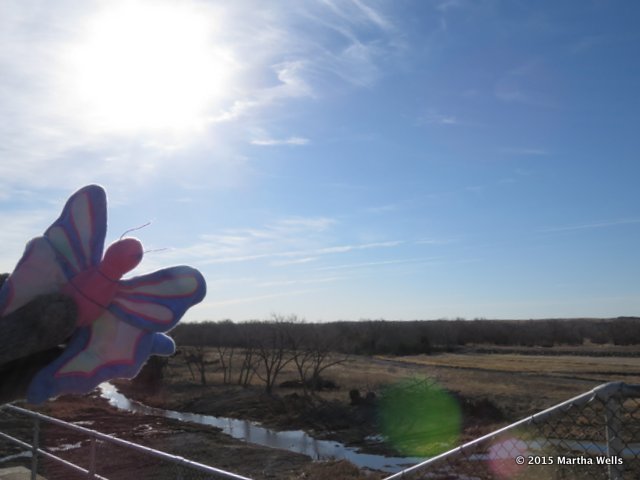 |
| MUSAP in Nebraska |
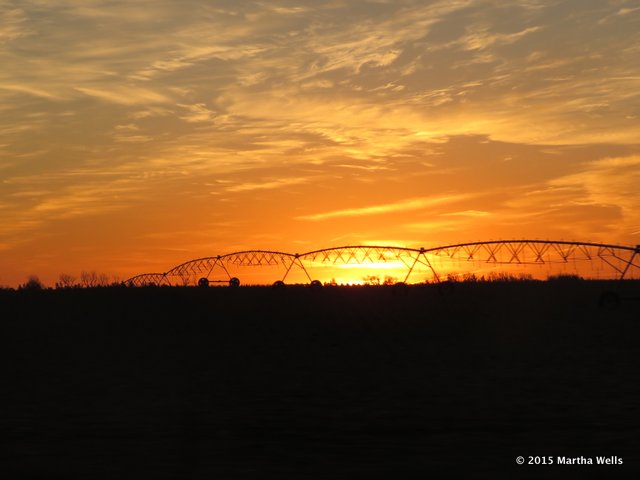 |
| Sunrise over Nebraska cornfields |
We had hoped to see Prairie Chickens, but didn’t have any luck. After the heat on Day 1 the temperature had dropped so that may have kept them out of view. Bill and Tim, our group leaders, knew where a lek was located and that’s where we were looking.
 |
| Looking for Prairie Chickens |
A lek is an area where Prairie Chickens live and the males display.
 |
| the "lek" is at the top of the farthest rise |
We also looked for Prairie Dogs - too cold for them too. We were patient and saw a couple poking out of their burrows, but not too much activity.
 |
| Prairie Dog Town - everyone was hiding |
Next stop was the Harlan County Reservoir. The dam area is closed because they are doing repairs.
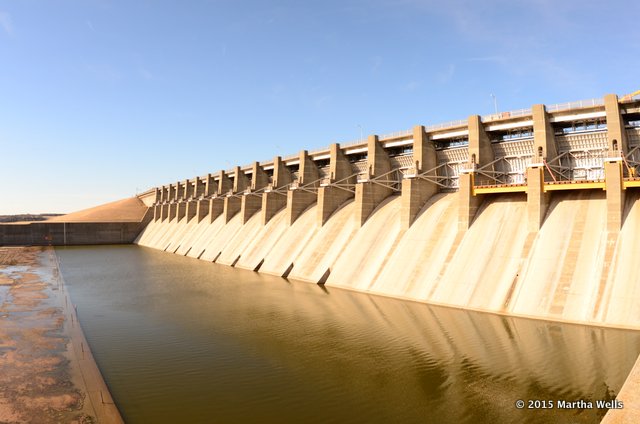 |
| Harlan County Dam |
We spotted a bald eagle down river.
 |
| Bald Eagle |
On the other side we spotted some pelicans and various kinds of ducks. We were missing the warm weather we had enjoyed the day before.
 |
| Road Scholar birders |
Lunch was at a diner in Holdredge, Nebraska. It was St Patricks Day so they were busy and the service and food we received was not noteworthy.
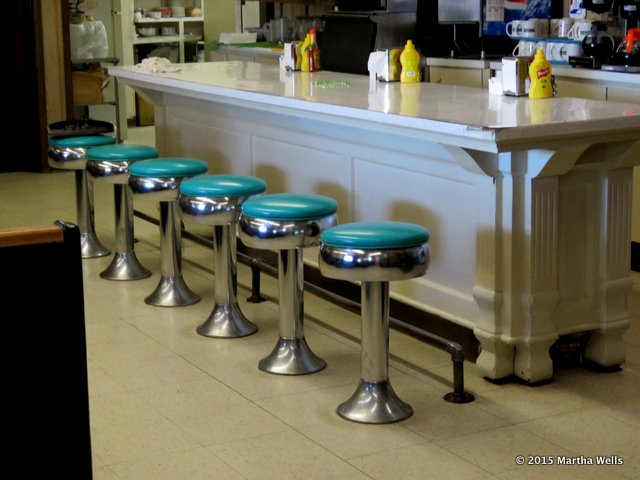 |
| stools in the diner |
After lunch, and warming up, we made a stop at the Holdredge City Park where there is a pond. Here was saw Cackling geese, a Mute Swan, a Ross’s Goose, and a variety of ducks. It was one of the better stops of the day for seeing birds.
 |
| Mute Swan, ducks, Wood Duck, Cackling Geese, Ross's Goose |
We drove through the Funk Waterfowl Production Area - which was most notable for it’s name. Not too many birds to be seen, but there were some robins.
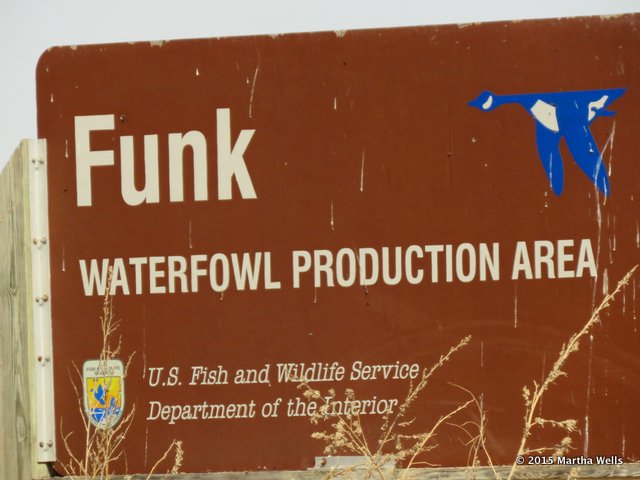 |
| fun name |
After a full day of cranes on Monday we hadn’t seen many cranes. But as we headed back to the hotel we saw some.
 |
| sandhill cranes over a corn field |
It was wonderful to see green on the ground!
 |
| green! |
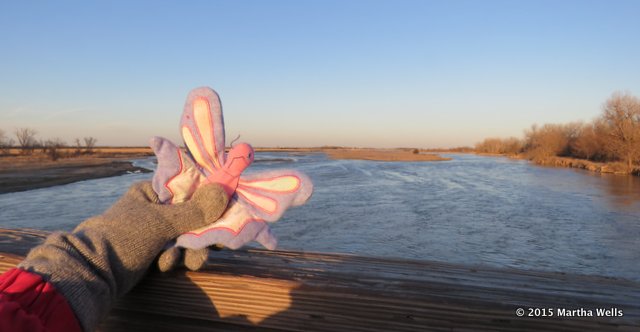 |
| MUSAP at the Platte River |
This was our ‘free’ evening. Dinner was on our own. I don’t care about eating so I decided I wanted to head out to take some pix of sunset. Then I realized I could probably see cranes too.
 |
| Sandhill Cranes flying in to roost by the Platte River |
So I drove to Fort Kearney to watch the cranes fly in to the Platte River from the Ft Kearney Bridge. It’s an old railroad bridge that spans the Platte River and it’s a popular spot to be during migration time.
 |
| photographers waiting for the light and the cranes |
There were a few other Road Scholar folks there too.
 |
| capturing the moment |
The sunset was beautiful and the cranes certainly did not disappoint us. They started flying over in small groups and then came by the hundreds.
 |
| Cranes and contrails |
It was interesting to see that they seemed to fly in more “V” formations coming back to the river to roost than I had noticed any of the other times we had seen them.
 |
| "V" formations |
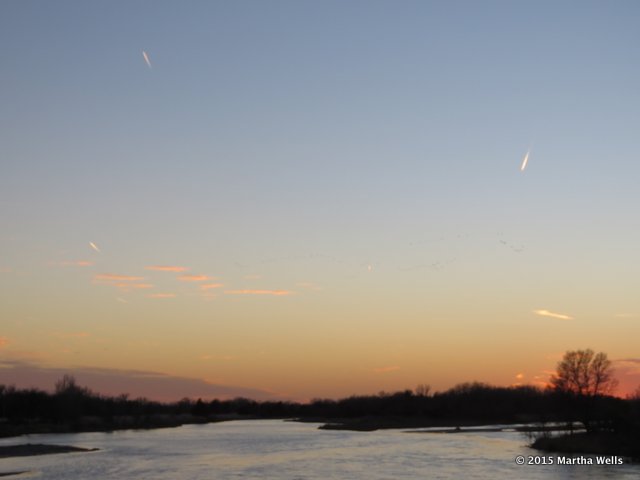 |
| sunset sky |
CRANE TRIVIA ~ For about a month each March, over 500,000 sandhill cranes converge on the Platte River basin in Nebraska to rest and eat before they finish their migration to their northern breeding grounds.
 |
| Platte River |
Again I was happy to have borrowed Eric’s GoPro camera. There is a video at the end of the album of photos so you can experience the sounds of the cranes and see them in motion.
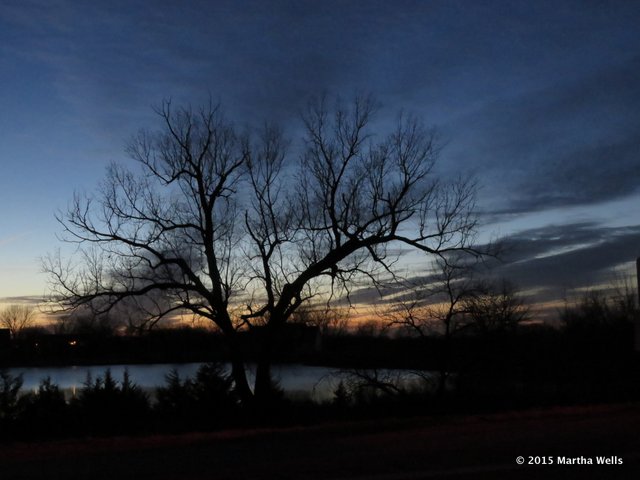 |
| Nebraska sunset |
March 2015